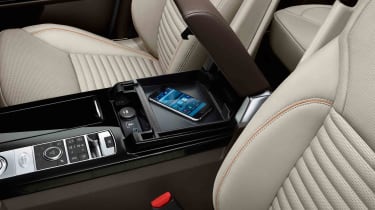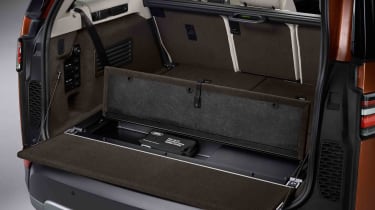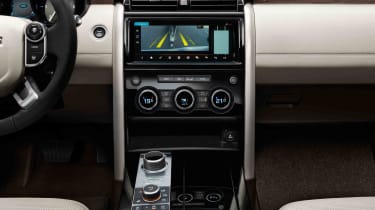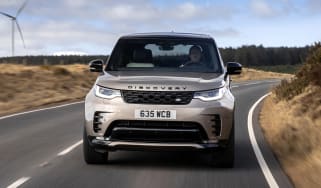New Land Rover Discovery: prices, specs, on-sale date and video
Full details have been released for the new Land Rover Discovery SUV; read on for all there is to know
When cars start getting nicknames, you know they’ve had an impact – and the Land Rover Discovery, or Disco, as it’s sometimes known, has been a key product for Land Rover since the first version launched back in 1989.
But while most carmakers roll out a new model every seven years or so, the outgoing Discovery 4 has been in production since 2004. Sure, the Discovery 4 was much improved over the 3 it ostensibly replaced, but they were fundamentally the same (very capable) car underneath.
The new Land Rover Discovery, on the other hand, represents a fresh beginning. It shares many mechanicals with the plush Range Rover and Range Rover Sport, but while those cars both cost well over £60,000, the latest Discovery is priced from £43,495. That’s a fair bit cheaper than the similarly sized Audi Q7, Volvo XC90 and BMW X5.
What do you get for your money if you choose the Land Rover? Well, seven seats as standard for a start, with those in the third row afforded decent headroom thanks to the stepped roof – a Disco hallmark.
You also get a far more economical car than the old Discovery 4, which was reasonably frugal when it was launched, but started to look pretty thirsty as rivals became more efficient over time.
The cheapest Discovery comes with a 238bhp 2.0-litre diesel engine, which officially returns 43.5mpg. That’s an improvement of 15% compared to the most economical Discovery 4 and this has been achieved in part thanks to the new car being an astounding 450kg lighter than the old one.
The new Land Rover Discovery is on sale now – read our full review here.
New Land Rover Discovery: design
The Discovery 4 was almost unapologetic in its boxiness, but the new Disco has softer lines, fewer vertical edges and a sleeker profile. The stepped roof has been carried over, but aside from that, the latest Discovery is a significant aesthetic departure from the outgoing car.
Clear influences from the Land Rover Discovery Sport are easy to spot, with the most overt similarities being the body-coloured C-pillar between the rear doors and boot, a narrow front grille, sharp headlight clusters and a swept-back nose.
LED running lights flow in a horizontal strip at the bottom of the headlights, while the roof spoiler may seem slightly out of keeping with the Discovery’s practical credentials, but should aid aerodynamics.
There are utilitarian nods as well as stylistic ones, though: a protective silver skid plate cloaks the lower front and rear portions of the car, and the lowest portions of the wheelarches and sills are covered in durable black plastic.
Any missteps? Well, Land Rover has decided against fitting the new Discovery with a split-opening boot – although the company is keen to point out any nostalgia for this should be tempered by remembering the original Discovery had a side-opening boot.
Anyway, those used to perching at the back of the Discovery 4 when out and about can find solace in the new Discovery’s ‘powered inner tailgate’. This standard feature folds down from the boot at the touch of a button and can seat 300kg’s worth of people.
The asymmetrical boot and placement of the rear number plate have also drawn some criticism – although these may well be easy to acclimatise to over time.
Off-road ability and safety
Both Land Rover and the Discovery brand have a deserved reputation for off-road prowess, and few cars will be able to follow the new Discovery if you venture off-piste. It’ll wade through nearly a metre (900mm) of water, climb a 34-degree slope (and down a 30-degree one) while the ‘all-terrain progress control’ system will keep the car automatically moving and braking at speeds up to 19mph, leaving you to take care of the steering.
Those brave enough to take the Discovery through deep water will welcome the ‘wade sensing’ system, as this lets you know how close the car is to becoming a boat, rather than an SUV.
Other off-roading aids include hill-descent control to make steep slopes safer, gradient release control to make starting on hills less fraught, and systems to detect and intervene in situations where the car could roll over.
The Discovery’s reputation as a tow car also precedes it, so it’s reassuring to see the new car maintains the Disco 4’s impressive 3,500kg towing capacity. That’s now complemented by an ‘advanced tow assist’ system, which will steer the car for you when reversing with a trailer or caravan – a counterintuitive and tricky procedure at the best of times.
Safety technology is comprehensive, with autonomous emergency braking, optional adaptive cruise control and hill-start assistance all being standard. The parking system can manage perpendicular spaces and can also work in reverse, driving you out of a tight parking space with minimum fuss, and can also ensure there’s enough room to open the doors once parked. Options include traffic-sign recognition (this works with the intelligent speed limiter to help keep you legal) and adaptive LED headlights, which turn with the direction of the car.
Engines
The 238bhp 2.0-litre SD diesel engine provides the Discovery with the best economy (43.5mpg) and lowest price, but those after more grunt can upgrade to the 255bhp 3.0-litre TD diesel. This officially returns a whisker under 40mpg, which is still palatable – although the 26mpg of the supercharged 355bhp 3.0-litre Si6 petrol is markedly less so; this engine is really aimed at those living in countries with lower fuel duties. An eight-speed automatic gearbox is standard across the range.
While the 2.0-litre and 3.0-litre diesels’ 0-62mph times are almost identical at 8.3 and 8.1 seconds, the larger engine should provide a fair bit more shove when overtaking at motorway speeds. Those who can justify huge fuel bills will be able to reach 62mph in just 7.1 seconds by choosing the supercharged petrol engine.
CO2 emissions for the 2.0 and 3.0-litre diesels stand at 171 and 189g/km respectively, making company-car drivers liable for a 34 or 37% Benefit-in-Kind (BiK) rate. Those are high rates (37% is the highest a car can attract), particularly when a diesel Volvo XC90 can be configured so as to attract a BiK rate of just 26%.
Trim levels, interior & practicality
The Land Rover Discovery is available in S, SE, HSE and HSE Luxury trims, with S starting at £43,495. None is poorly equipped, although many will want to upgrade to SE as this includes leather seats.
S trim gets you cloth seats, air-conditioning, cruise control, 19-inch alloy wheels, a powered bootlid, autonomous emergency braking, a lane-departure warning system, 60:40 split-folding rear seats and an eight-inch infotainment system complete with an 80-watt stereo, six speakers and a DAB radio.
Options include adaptive cruise control, a heated steering wheel (a snip at £195) and the ‘vision assist pack’. This last item comprises automatic lights and wipers, as well as heated, power-folding wing mirrors; at £350, this pack reasonably priced, but the extras it includes are standard with some superminis.
Upgrade to SE and the Discovery’s seats become upholstered in leather and the halogen headlights are replaced by LED items, while the stereo gains an extra four speakers and pumps out 250 watts. The touchscreen, meanwhile, is upgraded to Land Rover’s InControl Touch system and features sat nav, while all-round parking sensors (which really should be standard on so large a car) also put in an appearance. That’s a comprehensive set of extras, which it ought to be considering SE trim is £6,000 more than S.
Want more? HSE trim costs a staggering £7,500 more than SE, and includes 20-inch alloys, a 10-speaker, 380-watt Meridian stereo, a panoramic sunroof, a reversing camera (as with the SE’s parking sensors, this should really be standard), keyless entry and plusher ‘Windsor’ leather.
Things get even pricier with HSE Luxury, which requires a further £5,700. This range-topping trim features vast 21-inch alloy wheels, headlights that dip and switch to full beam automatically, a rear-seat entertainment system, two sunroofs (one fixed, one opening), a 360-degree camera setup and an upgraded 14-speaker 825-watt Meridian stereo.
Up to 600 UK buyers will also be able to get their hands on a ‘First Edition’ model, priced at £68,295 and available with the 3.0-litre V6 diesel engine only. This is fitted with scarcely credible 22-inch alloy wheels, comes with a choice of three premium colours, tinted glass and metal dashboard inserts etched with a map motif. A fridge, meanwhile, rests in the centre armrest, while the rear seats become cooled and heated.
While those prices may make some of the Discovery range financially inaccessible, physically getting in and out of the car should be made easier by ‘auto access height’. This established Land Rover and Range Rover feature lowers the car’s air suspension by up to 40mm when activated.
The ‘activity key’ first seen on the Jaguar F-Pace also puts in an appearance: this innovative gadget allows you to you to lock the Discovery’s proper key inside it while you trek off, wearing a waterproof wristband that’ll lock and unlock the car. The activity key is likely to have a fairly niche appeal, but fans of watersports and the great outdoors will find it invaluable.
Available in five colours, the Discovery’s interior can be personalised with metal, leather or wood trim inserts. The new Discovery is bigger inside than the old one, with more space for seven occupants spread over the three rows of seats. For the first time in any car, a smartphone app will be able to configure the seating layout remotely, stowing or raising the rear seats.
Even with all seven seats up, the Discovery’s boot is a useable size at 258 litres – roughly the amount of space found in a supermini’s boot. Drop the third row of seats and available space more than quadruples to 1,137 litres, while lowering all of the rear seats reveals a van-like 2,406 litres of space.
The rear seats can also stow individually, while the second row can move forwards or backwards. Unlike in many rivals, the third row is said to be suitable for adults, while four out of the five back seats have ISOFIX mounting fixtures for child seats.
New Land Rover Discovery: price & on-sale date
The new Discovery is available to order now, priced from £43,495 for the 2.0-litre diesel engine and S trim. The 3.0-litre diesel starts at £50,995, although this includes and upgrade to SE trim.
If you’re thinking of buying a Discovery, it’s worth noting that while the steps between trim levels are steep, upgrading from the 2.0-litre diesel to the 3.0-litre costs a reasonable £1,500 if you go for SE trim.
Recommended
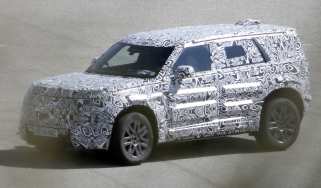
New Land Rover Defender Sport spotted and it’s an electric baby SUV
Most Popular

New Smart #5 Brabus is a 637bhp far cry from the brand’s city car past

Best car leasing deals 2025: this week’s top PCH offers
Tips & advice

Car dashboard warning lights: what does each symbol mean?

Electric car charging stations: public networks, charger types, apps and maps



